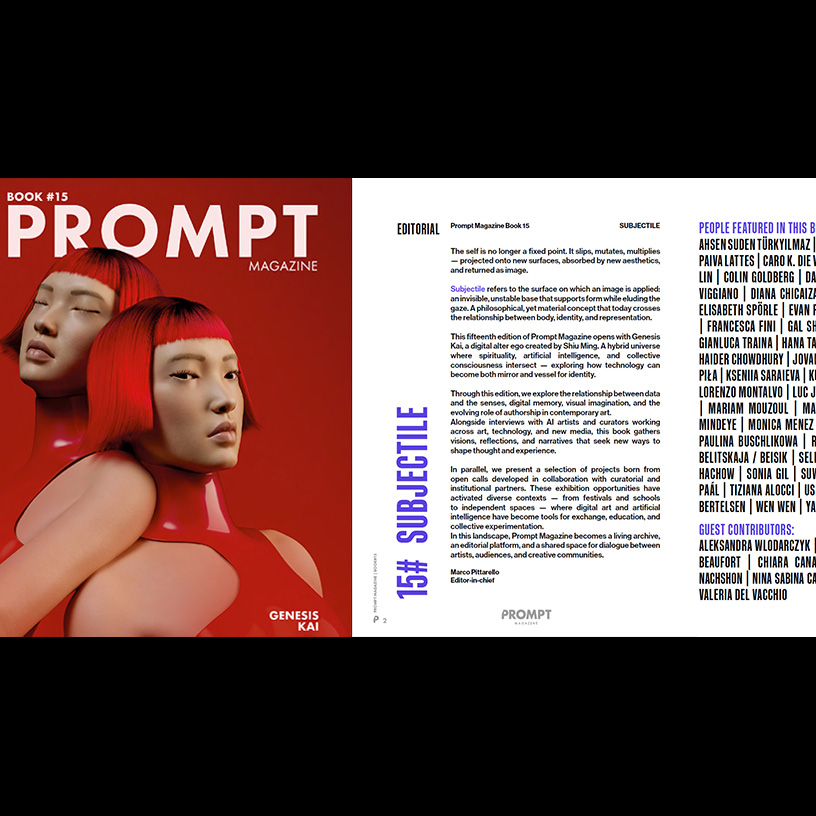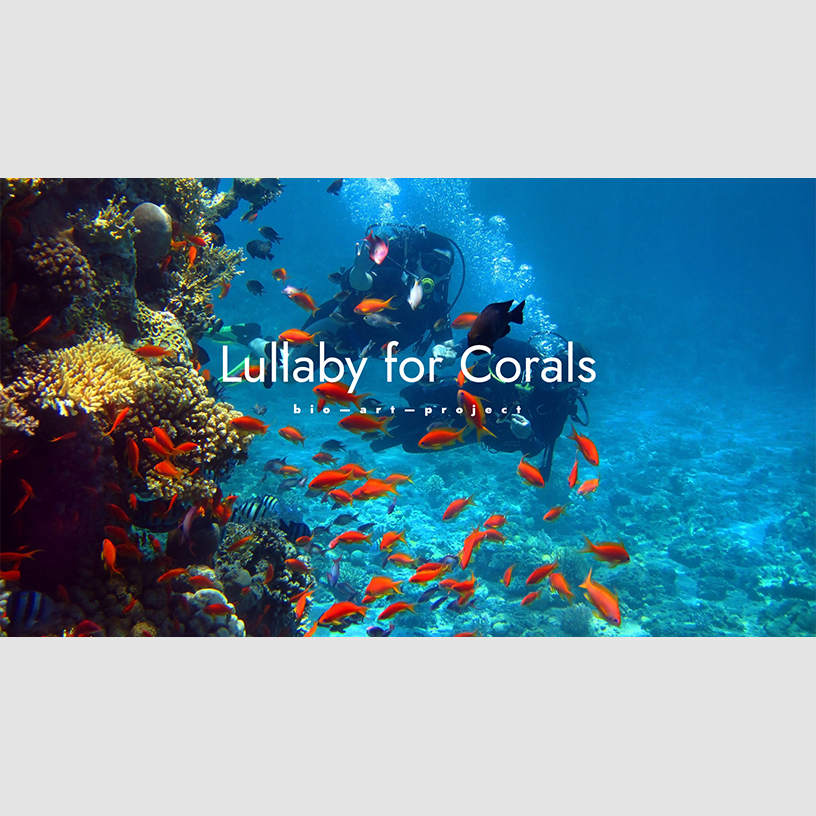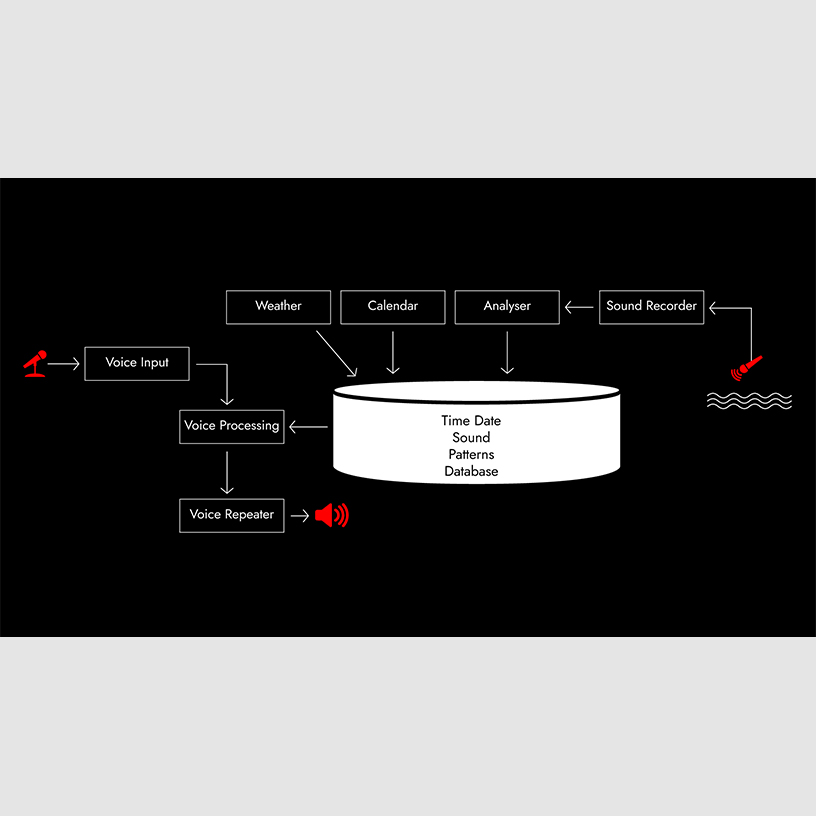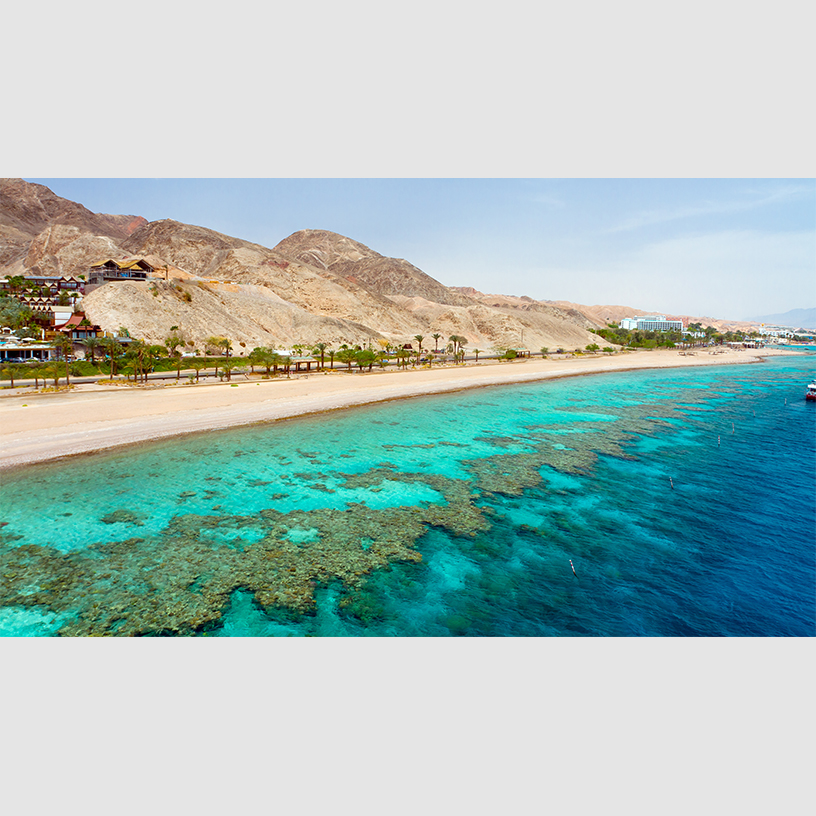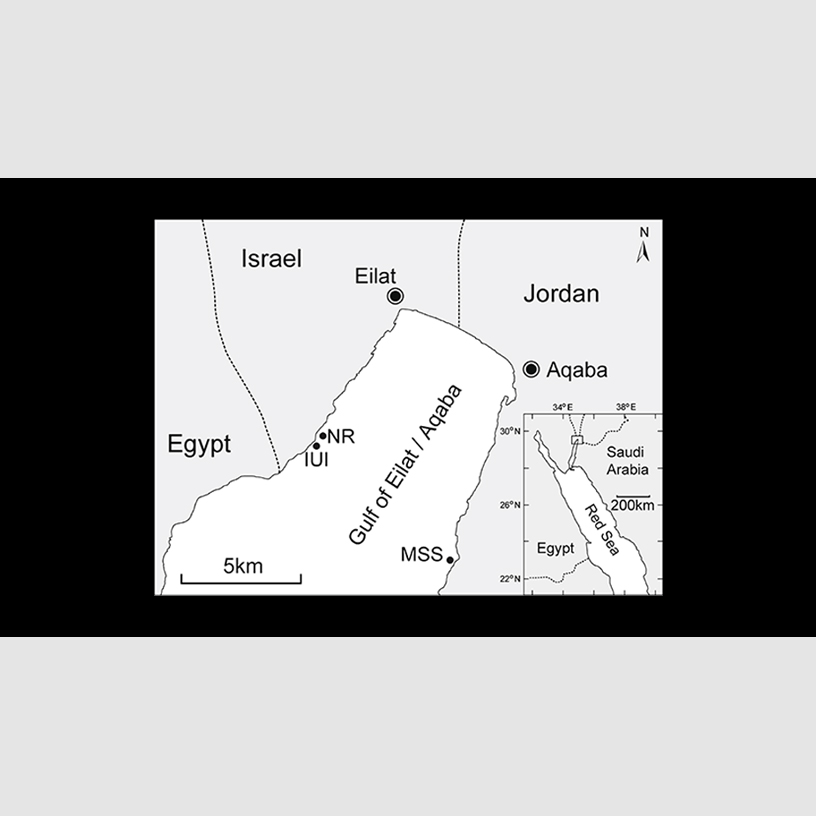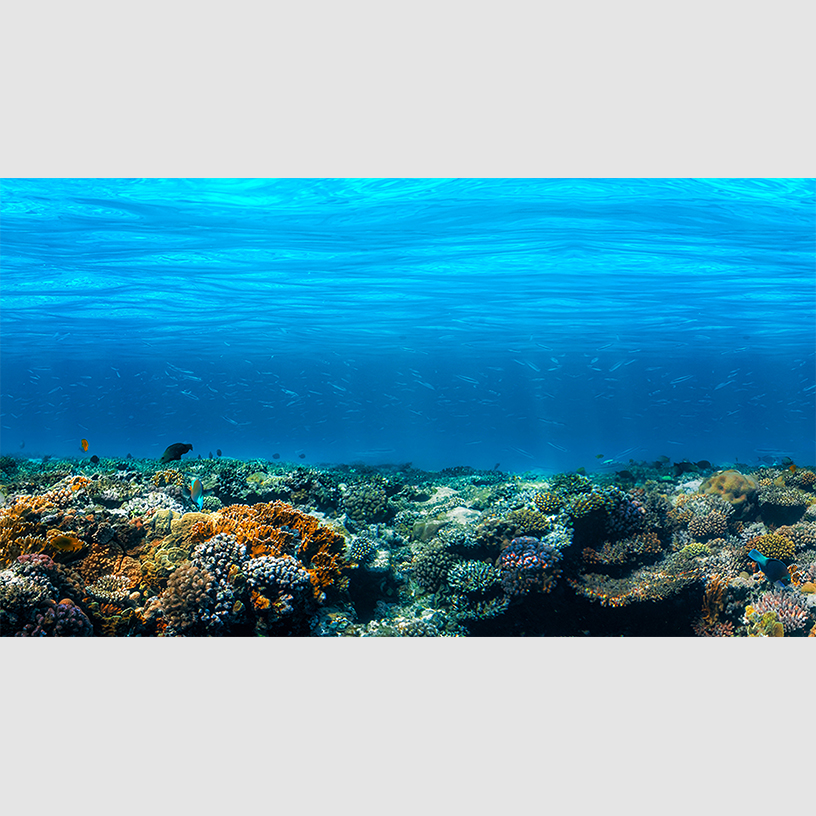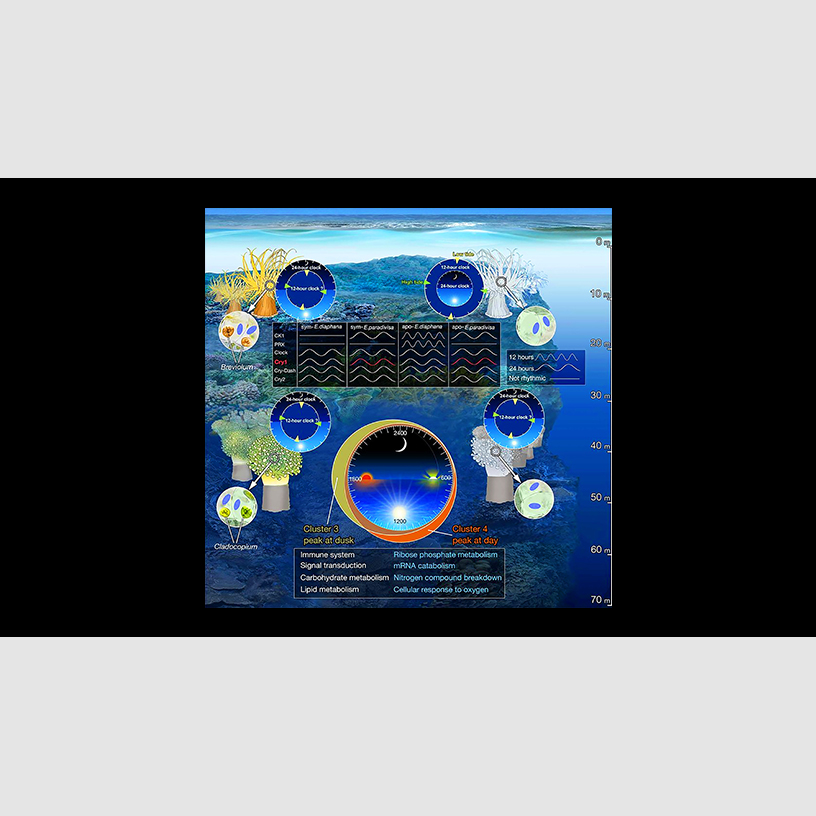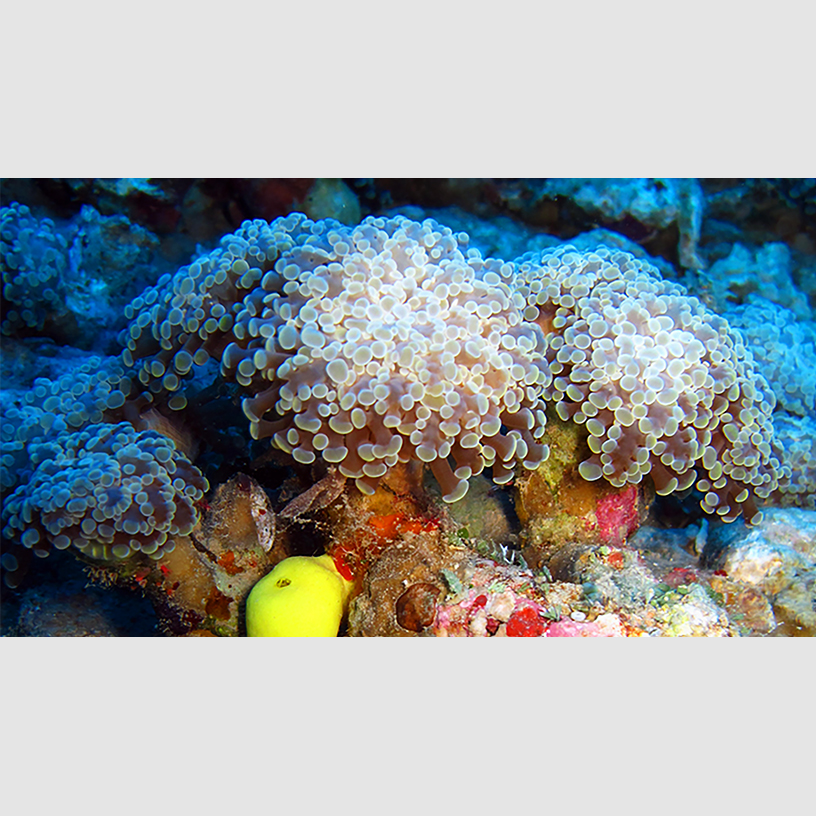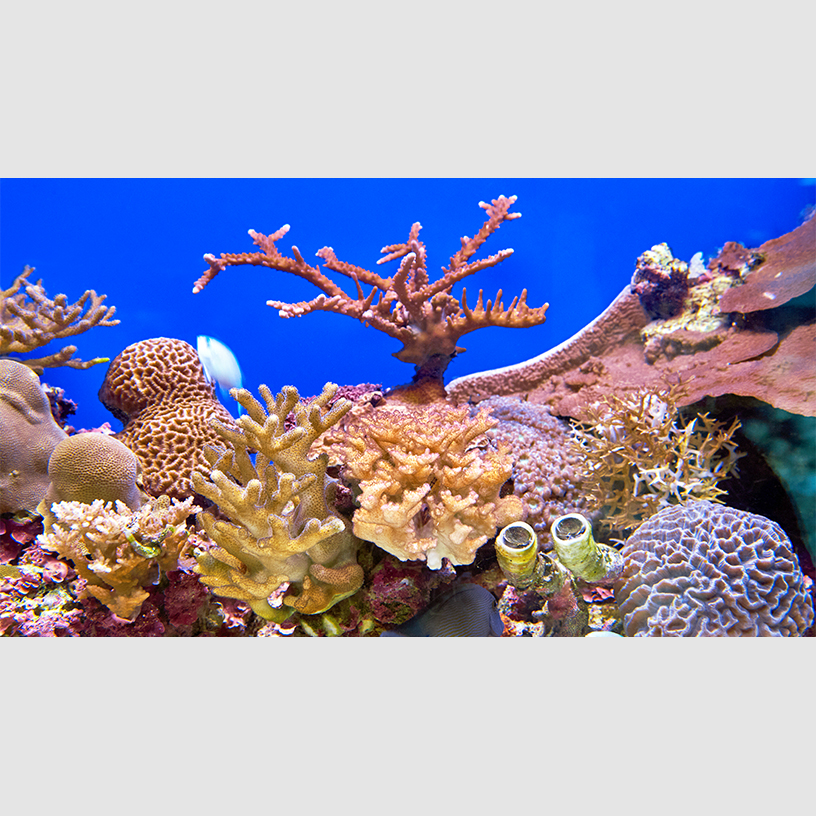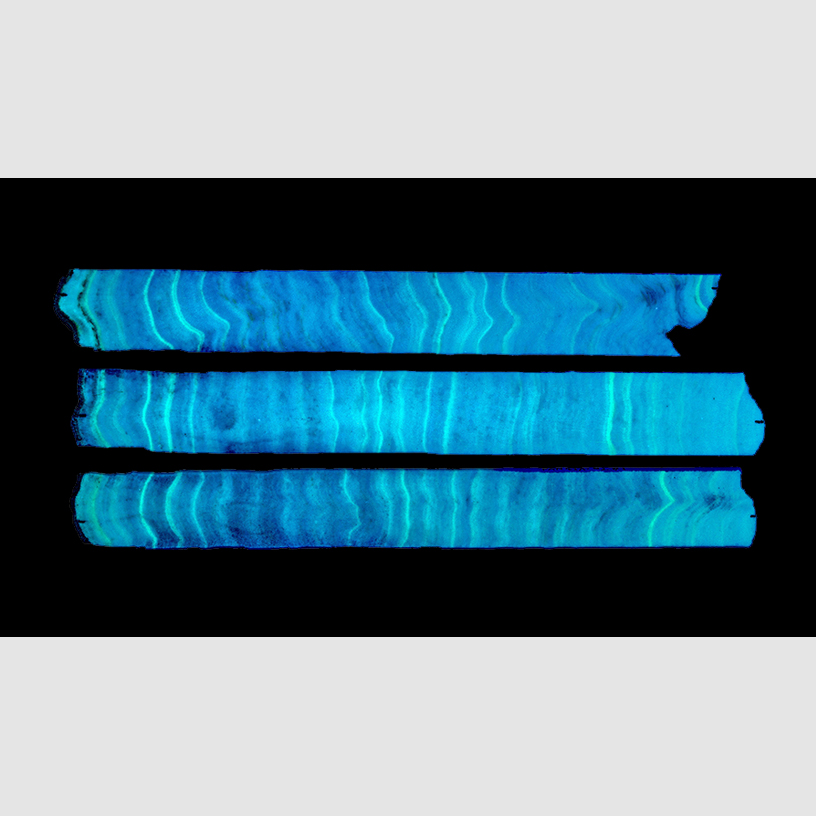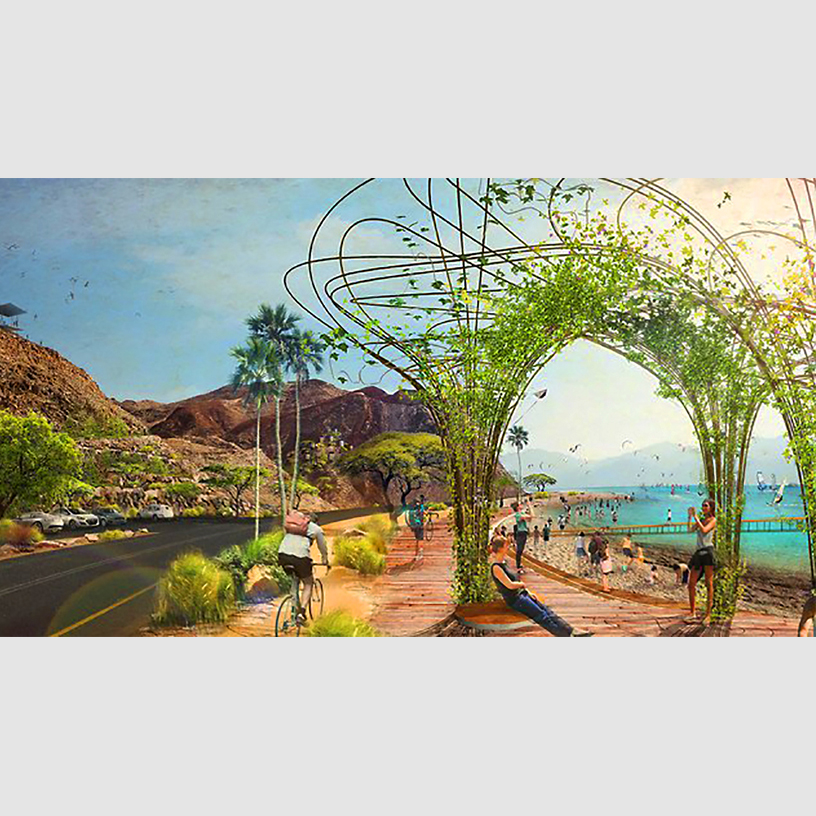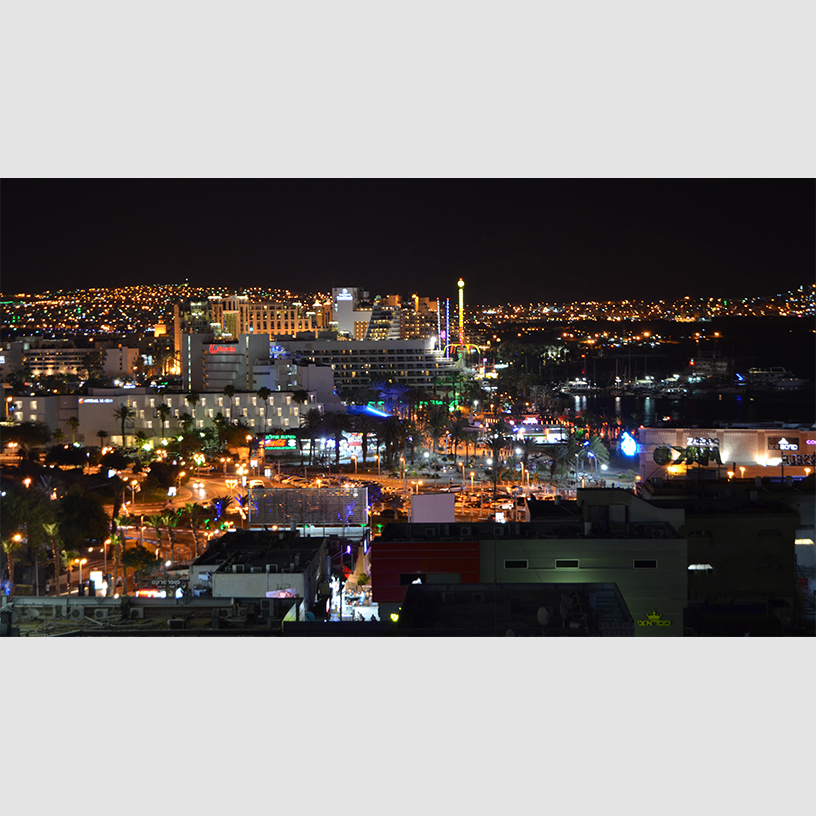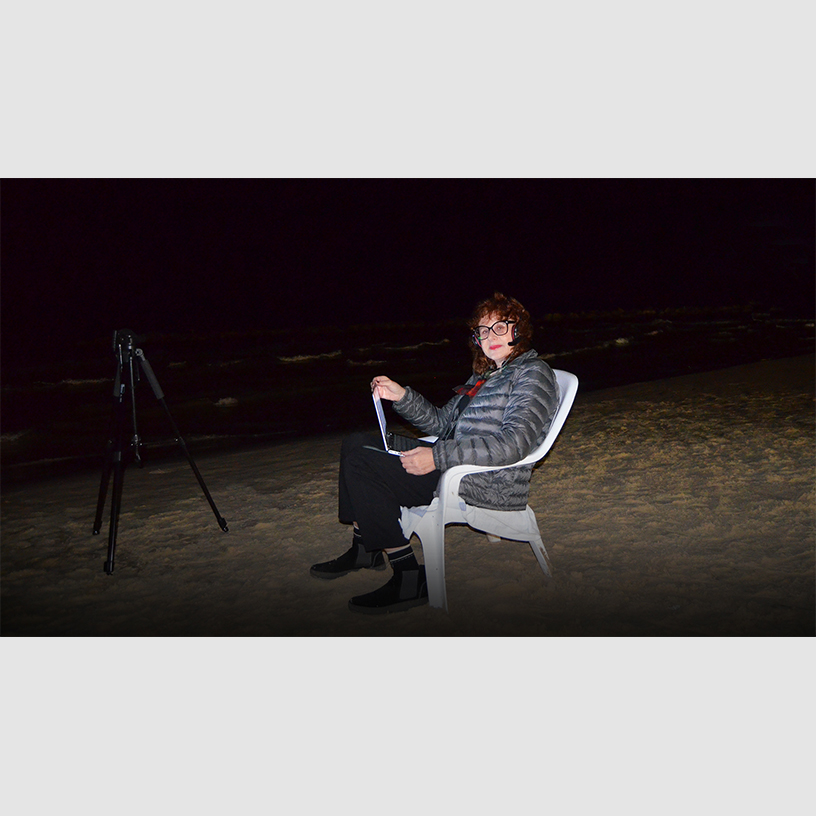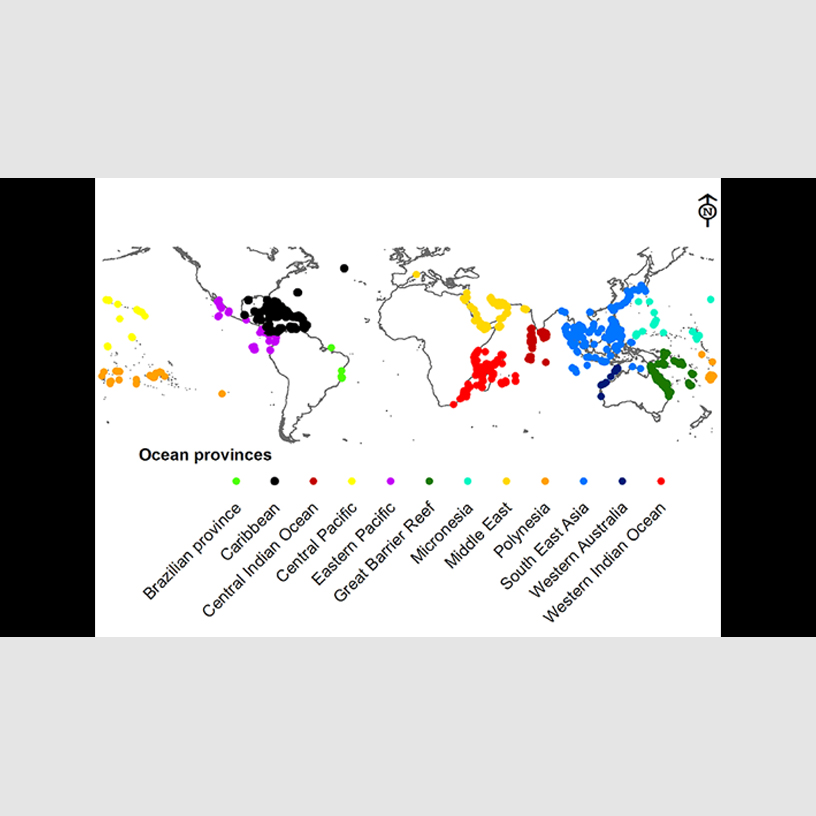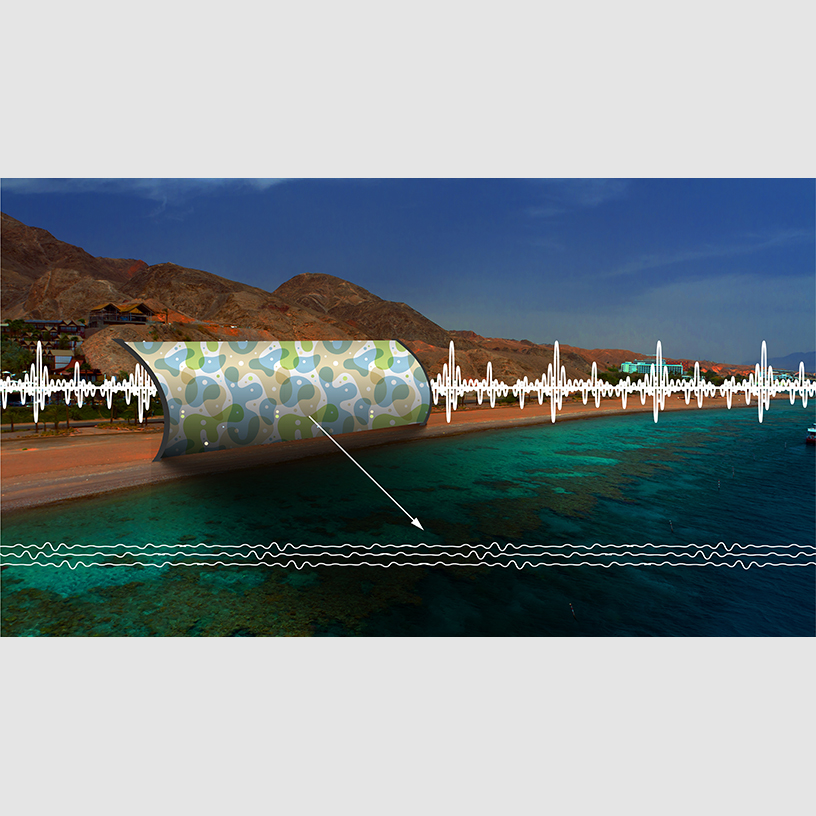LULLABY FOR CORALS
Bio-art, AI-art, Sound-art
work in progress

Aram traded with you because of the abundance of the goods you made. They paid for your merchandise with emeralds, purple, embroidered work, fine linen, coral, and rubies.
Ezekiel 27:16
The "Lullaby for Corals" project was started by me in 2023 1. The project is dedicated to saving the Eilat Coral reef 2. "Lullaby for Corals" is a complex speaker system includes a special sound-absorbing structure and a setup that produces and broadcasts "compensating" sound. "Compensating sound" is produced using a special sound program based on the work of artificial intelligence (AI) which can reprogram any sound: music, human speech, traffic noise, etc. into sounds which soothe corals and surrounding fauna that inhabit them. It is a Bio-art project built on the capabilities of artificial intelligence in the field of sound transformation 3.
The Gulf of Eilat is the southernmost area of Israel and uniquely natural. The pastel pink Eilat Mountains, turquoise water of the Red Sea, and huge schools of colorful fish which swim among the world-famous Eilat Coral Reef, make an unforgettable impression. This Israeli national reserve stretches for 1200 meters along the coast 4.
The reef is the northernmost coral in the world. It is made up of 270 species of corals all of which have become a safe haven for more than 2,500 fish and fauna. Moreover, some of these species live exclusively in the Red Sea. Sea turtles, shellfish, sea urchins, crayfish, octopi, cuttlefish and sometimes even dolphins can all be found swimming amongst the Eilat reef 5.
In 2014, during construction work on the territory of the Eilat port, significant damage was already done to the coral reef. Workers cut off the supports to which oil tankers were moored and brought them down to the bottom of the Gulf of Eilat. 2,600 corals were covered with construction debris and, accordingly, the marine life of the region was severely affected.
To date, the construction of a new embankment by the municipality of Eilat continues. According to scientists, the bright artificial lighting that will be installed on it will cause significant damage to the coral reef. At night, the corals “sleep”, and the bright light of the embankment lanterns prevents them from “falling asleep”. Due to the intrusive lighting, the corals get sick, lose their color and eventually die. 6.
This research has been confirmed by a new scientific discovery. Israeli scientists at Bar Ilan University have, for the first time, documented the biological clock of the coral species Euphyllia paradivisa and confirmed what was previously only a hypothesis 7.
The coral’s biological clock is an internal and independent mechanism that dictates their daily rhythm. This internal clock allows the coral to measure daily and seasonal signals which live in synchronization with the rhythm of nature. All of this happens while maintaining the necessary synchronization which provides important physiological and behavioral processes within the corals.
For corals, splitting includes the breakdown of sugars, the synthesis of fats, the opening and closing of their hunting tentacles, and much more. In a marine ecosystem, corals and algae maintain a symbiotic relationship in order to provide the algae with shelter and carbon dioxide and the corals with the food and nutrients they need to survive 8.
Corals have an independent biological clock which controls the timing of their major metabolic processes. This clock functions on a 24-hour schedule and much like our own, is heavily influenced by the light and darkness of both nature and artificial lights.
The coral reefs and their inhabitants are of extraordinary beauty and attract scuba divers from all over the world which contribute to the development of local tourism, business and thus, the economy of the entire region. Not only do the corals prop up the local economy but also, the marine ecosystem is a major source of calcium for medical preparations and procedures.
Today, scientists studying the area argue that the skeletal deposits of the reef contain massive amounts of environmental data dating back several thousand years. This knowledge has only become attainable since the 1970s. Most notable amongst these discoveries is the data collected on coral growth which suggests that corals have annual rings similar to those of trees 9. Coral cores, like tree cores, are organic time capsules containing records of local pollution, geology, ambient temperature, storm activity, and much more. Studying the composition of these coral cores can also provide scientists with information on planetary processes 10.
Therefore, when I read in the Israeli press that the lighting for the future Eilat promenade could destroy the coral reef, I, as a bio-artist and researcher, began looking for a way to preserve a rare natural phenomenon. As I learned later, the corals of the Eilat reef are prevented from "sleeping" not only by bright light, but also by the sound of loud discos and the nearby promenade 11.
In the process of work, I received information that the architects of the embankment heard the voice of scientists and decided to redirect the light from the lanterns towards the land in order to save the corals. Thus, this problem was solved. But, nevertheless, the problem of excessive noise and loud music remained.
I then continued to think about how it could be possible to transform the sounds of music into those sounds that would be a sort of "lullaby" for the corals. More specifically about “music" that would not only soothe and lull the corals but also, their many inhabitants 12.
I decided to sing a lullaby for the corals and transform it with the help of a special program into the music or noise that the corals “understand” and which is their natural environment - the “Coral” language. The song was recorded with a microphone and, after appropriate software processing, was broadcast towards the reef 13.
I wanted to give an opportunity to sing a lullaby to the corals and, thus, to give an opportunity to participate in this project to everyone who is currently on this embankment: foreign tourists, Israelis and local residents who came to rest from other cities. Thus, from the recorded lullabies of different countries and peoples, a unique musical puzzle will be formed, which will be integrated into the underwater environment of the Red Sea. I hope that this will give a sense of belonging to all participants of this performance, not only in relation to the problems of the Eilat Coral Reef, but also to similar problems of all existing coral reefs in the world 14.
In the process of working on the project, I had to consult with scientists in physics and acoustics. After working together with scientists, a solution was found for both the problem of strong sound and the problem of harsh light from the headlights of passing cars.
- I put up a temporary wall (screen) that will protect the corals from excess light and noise. A soundproof screen will dampen most of the acoustic impact.
- What to do with the remnants of extraneous noise? To do this, a special technological installation creates a compensating sound towards the corals (from the screen).
- The compensation sound is created on-line based on the noise from the disco and the noise patterns in this place at this time.
- Patterns are measured throughout the year and processed by an AI-based program.
- What is the function of lullabies in this project? The "Lullaby for Corals" clearly demonstrates the operation of a complex speaker system that includes a special sound-absorbing structure and a setup that produces and broadcasts "compensating" sound.
For the idea implementation (sound conversion), I resorted to the help of artificial intelligence (AI). AI in this project isolates from the songs those sounds that corals “understand” and “translates” other “alien” sounds into “Coral” language. In this way, the "Lullaby for Corals" project encourages visitors to this unique nature reserve to become aware of and actively participate in the conservation of Eilat's Coral Reef. In addition, "Lullaby for Corals" expands the application of AI in environmental protection and serves as a rallying point for interdisciplinary collaboration in the field of ecology, art and science 15.
Shows:
- – 59 Seconds. Group exhibition. Institute of Contemporary Art, Sofia, Bulgaria. Curator: Irina Danilova.
- – 59 Seconds. Group exhibition. Cinematheque, Tel Aviv, Israel. Curators: Irina Danilova, Hiram Levy.
- – 59 Seconds. Group exhibition. WASP, Bucharest, Romania. Curator: Irina Danilova.
- – 59 Seconds. Group exhibition. One Step Closer Foundation, Odesa, Ukraine. Curator: Irina Danilova.
- – 59 Seconds. Group exhibition. Art Pidval of the Municipal Gallery, Kharkiv, Ukraine. Curator: Irina Danilova.
- – 59 Seconds. Group exhibition. The Modern Art Research Institute of the National Academy of Arts of Ukraine, Kyiv, Ukraine. Curator: Irina Danilova.
- – 59 Seconds. Group exhibition. Korsak Museum of Contemporary Ukrainian Art, Lutsk, Ukraine. Curator: Irina Danilova.
- – 59 Seconds. Group exhibition. Katarzyna Kozyra Foundation, Turnus na Wolskiej, Warshaw, Poland. Curator: Irina Danilova.
- – 59 Seconds. Group exhibition. Goldsmiths University of London, RHB Cinema, Richard Hoggart Building, London, United Kingdom. Curator: Irina Danilova.
- – We Make Future. Group exhibition. Festival su Intelligenza Artificiale, Tecnologia e Innovazione Digitale, Bologna, Italy. Curator: Chiara Canali.
Events:
- – The Leonardo/ISAST Laser Talks Jerusalem: Reimagining AI: Research and Creative Practice with AI Agents and Simulations. International conference organised by INEMEA non-profit organization. Jerusalem, Israel. Chair: Galina Bleikh. Moderator: Daria Kesler. Coordinator: Dr. Lilia Chak.
- – The Leonardo/ISAST Laser Talks Jerusalem: International Art and Science LAB Exchange. International conference organised by INEMEA non-profit organization. Jerusalem, Israel. Chair: Galina Bleikh. Moderator: Daria Kesler.
Title of my presentation:Lullaby for Corals
.
Media:
- – Marco Pittarello.
Prompt Magazine Book#15 | Subjectile
, article, page 65. Prompt Magazine®. Padua, Italy.
Awards:
- – Winner for 59 SECONDS (and beyond). Project 59 Inc., AI video art-project. New York, USA.
- – Winner for WMF. PROMPT Magazine, AI art-project. Bologna, Italy.

